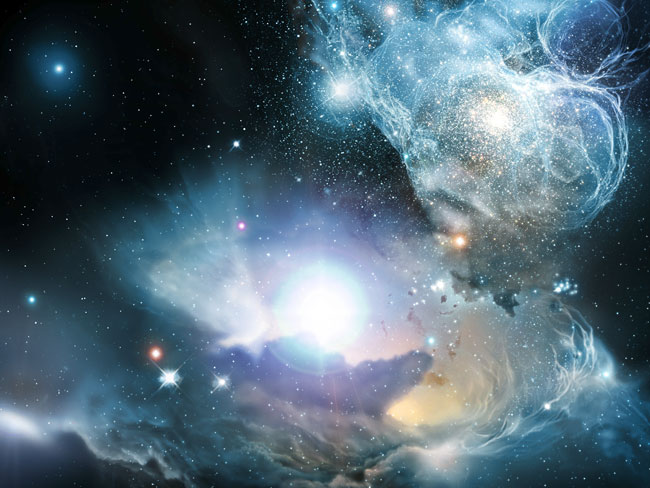Explanation: What did the first quasars look like? The nearest quasars are now known to be supermassive black holes in the centers of galaxies. Gas and dust that falls toward a quasar glows brightly, sometimes outglowing the entire home galaxy. The quasars that formed in the first billion years of the universe are more mysterious, though, with even the nature of the surrounding gas still unknown. Above, an artist's impression shows a primordial quasar as it might have been, surrounded by sheets of gas, dust, stars, and early star clusters. Exacting observations of three distant quasars now indicate emission of very specific colors of the element iron. These Hubble Space Telescope observations, which bolster recent results from the WMAP mission, indicate that a whole complete cycle of stars was born, created this iron, and died within the first few hundred million years of the universe.
1999 2000 2001 2002 2003 2004 2005 2006 2007 2008 2009 2010 2011 2012 2013 2014 2015 2016 2017 2018 2019 2020 2021 2022 2023 2024 2025 |
Январь Февраль Март Апрель Май Июнь Июль Август Сентябрь Октябрь Ноябрь Декабрь |
NASA Web Site Statements, Warnings, and Disclaimers
NASA Official: Jay Norris. Specific rights apply.
A service of: LHEA at NASA / GSFC
& Michigan Tech. U.
|
Публикации с ключевыми словами:
WMAP - Population III - населения звездные - микроволновое фоновое излучение - квазары
Публикации со словами: WMAP - Population III - населения звездные - микроволновое фоновое излучение - квазары | |
См. также:
Все публикации на ту же тему >> | |
